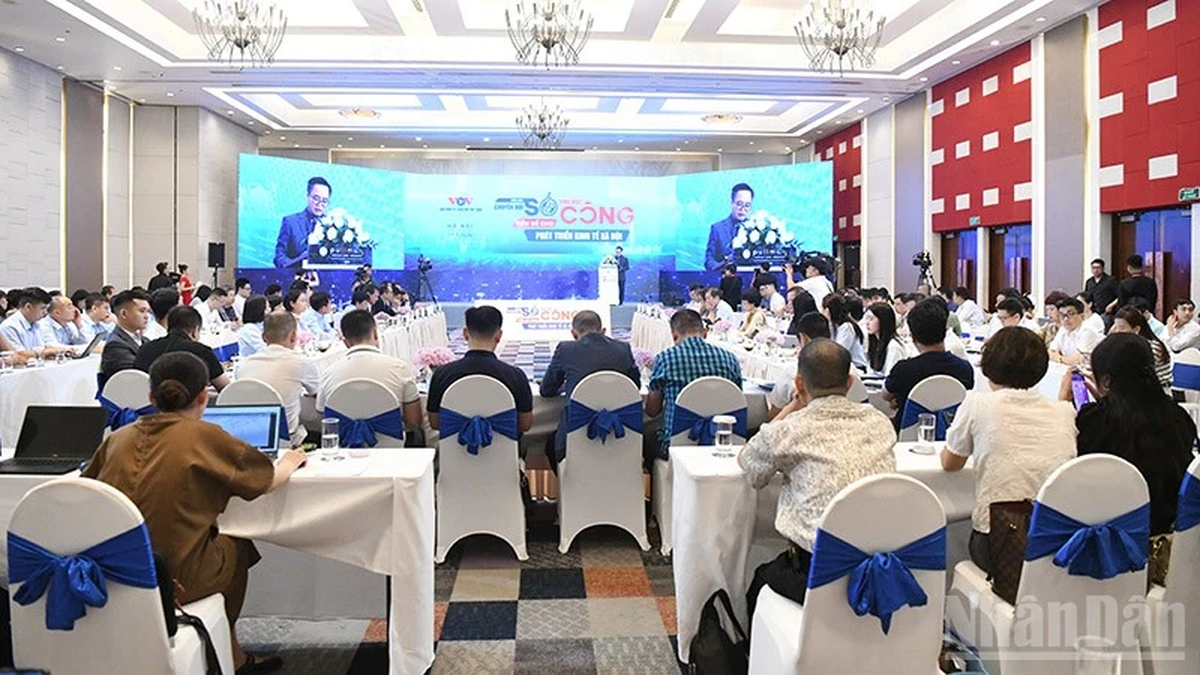 |
| Strategic Competition: The West 'Throws Heavy Firepower' to Strengthen 'Self-Sufficient' Economy , Is Asia in Danger? (Source: Shutterstock) |
There has long been a chorus of criticism that has not appreciated China’s manufacturing prowess. Even as Asia’s No. 1 economy continues to grow in global exports, there is a refrain that rising labor costs will erode Beijing’s competitiveness, while deep structural constraints will prevent the Northeast Asian nation from moving into more advanced industries.
Proponents of this view often argue that the country's manufacturing dominance will eventually be reversed - it's just a matter of time.
China's success?
Not sharing the same view, in an analysis article on asia.nikkei.com, expert William Bratton, author of “China’s rise, Asia’s decline” and former chief economist and head of Asia- Pacific equity research at HSBC Bank, commented: “The strange thing is that these arguments are still quite popular. But in fact, despite predictions that China’s competitiveness has decreased, input costs are much higher… the country has simultaneously moved to the leading position in many advanced fields.”
The problem now is that the empirical evidence of China’s competitive strategy and its durability appears to be growing, evident in the interventionist industrial policies being implemented across the United States and European Union (EU) economies.
Most notable are the laws aimed at protecting American industrial development. The strongest rhetoric has come from the Joe Biden administration about the need to maintain technological leadership, especially in advanced fields, and to prioritize American jobs. In many ways, expert William Bratton notes, “this trend seems more Trumpian than former President Donald Trump.”
However, unlike former President Trump's "America First" doctrine, President Biden's efforts to restore US manufacturing could be successful in the long term because it has a commitment from the government to "back it up." At the same time, this ideological shift is unlikely to be reversed anytime soon, given the bipartisan support behind it.
The legislation aimed at bolstering US manufacturing has caused anxiety across Europe, especially as concerns about the transatlantic shift in technology and manufacturing have become a reality and there has been a trend of European companies prioritising investment in the US, seeking access to generous subsidies in the land of the stars and stripes.
In response, however, the EU is also looking to “imitate” the US approach. The Net-Zero Industry Act aims to ensure that at least 40% of the bloc’s needs are met in strategic net-zero technologies by 2030.
The bloc is also looking to protect its industries through the Carbon Border Adjustment Mechanism (CBAM) – a policy tool that imposes a carbon tax on all goods imported into the EU market, based on the greenhouse gas emissions intensity of their production in the exporting country. The CBAM would thus impose a carbon tax on all of Europe’s trading partners.
These actions were justified by the common desire of the three world economic superpowers to increase the competitiveness of domestic producers, secure ownership of key technologies, and establish domestic economic resilience. Unfortunately, none of these goals are beneficial to the international trading system.
What about the rest of the world?
China, the US and the EU may have to point out where responsibility lies in their tendency to erode the fundamental principles of open markets and free trade, with their clear focus on domestic “self-sufficiency” and willingness to adopt more protectionist policies, all of which are being implemented without regard to the consequences for trading partners, including those in Asia.
Fundamentally, competitiveness in manufacturing is largely a matter of scale – which reinforces relative cost efficiency, as well as determining the resources available for innovation and the ability to support greater specialization. Lack of domestic scale can be compensated for by a classic export-led development model – as demonstrated successfully by the Asian Tigers.
But if the three economic superpowers – which account for 60% of global GDP and 54% of imports – are “closed” to operations – meaning that the remaining economies’ effective market access has been significantly reduced – then it would be naive to assume that the rest of the world is unaffected.
At present, the Asian economies most at risk from this protectionist trend are those at a similar stage of industrial development and developing similar industries, including Japan, South Korea, and Taiwan (China). None of them has the financial firepower to compete with the financial resources of the three economic superpowers.
But even less developed economies may find their efforts to develop or expand their manufacturing capacity constrained, as protectionist sentiment increasingly restricts access to Western and Chinese markets. And the continued concentration of global manufacturing in China, Europe and the United States could have long-term economic and political consequences.
The link between dynamic and competitive manufacturing sectors and economic growth and prosperity is often overlooked. But in fact, manufacturing is often a necessary ingredient for sustainable and self-reliant development. This is most evident in countries that are striving for economic development.
And indeed, the adverse consequences of deindustrialization are well documented, including declining productivity, stagnant incomes, rising inequality, and reduced innovation capacity. And then there are the geopolitical risks.
First, the loss of manufacturing leads to technological dependence and, consequently, political leverage. Countries are forced into undesirable technological choices that are difficult to escape later and are restricted in their access to large parts of the global economy.
The second risk is that a country's geopolitical importance is largely determined by its participation in global supply chains, so its importance will inevitably decline as its role shrinks.
For example, if the United States succeeds and possesses semiconductor potential comparable to South Korea, is it realistic to assume that it will remain a steadfast security partner? - It is difficult to answer, because after all, US involvement in the Middle East has diminished as the region's importance as an energy supplier has waned.
A similar dynamic must be assumed, as the US and EU “repatriate” other strategic industries to their home countries.
Already, Asian manufacturers are facing a near-existent crisis due to China’s hyper-competitiveness. But the new EU and US strategies hardly suggest they can be trusted as “friends in need”.
Instead, the international trading system is under increasing pressure, with protectionism justified on geopolitical grounds, while traditional trading partners such as Japan and South Korea are simply the inevitable “sacrifices” in an ongoing battle between economic powers.
However, one way to circumvent the influence of the economic superpowers is to strengthen free trade agreements that exclude the three giant economies to ensure that the international partnerships that are prioritized are more balanced, both economically and geopolitically. The Comprehensive and Progressive Agreement for Trans-Pacific Partnership (CPTPP) is said to fit this bill.
.
Source





































































































Comment (0)